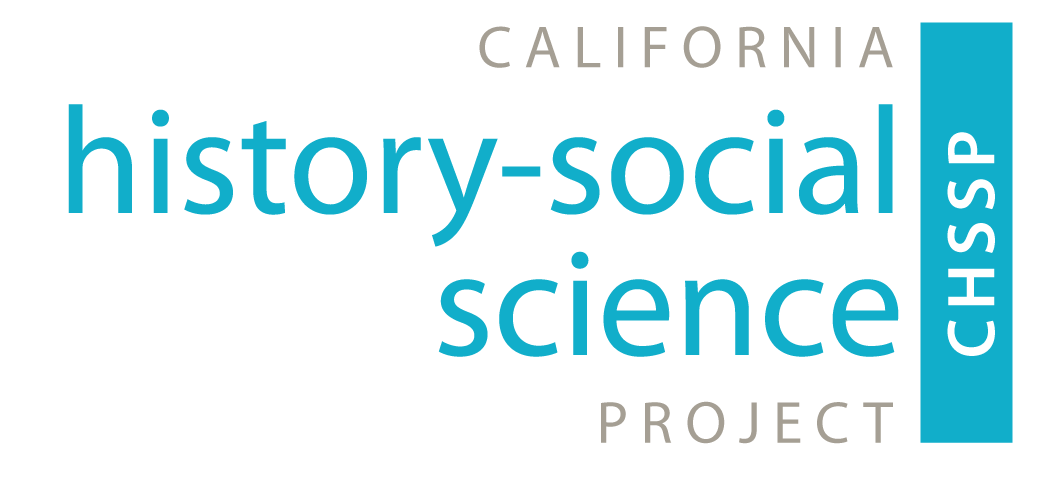The Blueprint Cold War Unit Writing Team
Originally posted on October 16, 2012 by Shennan Hutton
On September 29, seven teacher leaders, three graduate students and three CHSSP staff met together to begin the lesson design process for the Blueprint Cold War Unit. Gena Arriola-Salas, a teacher at Whittier High School in Whittier, will design Lesson 1 on the origins of the Cold War. Lesson 2 on decolonization (in the world strand) is the assignment of Susan Piekarski of Irvington High School in Fremont. Adrienne Karyadi, of Santa Monica High School (in the town of the same name), will design Lesson 3, on the challenges in the three-world order, which is also in the world history strand. Lesson 4, on the Cold War abroad (in the US history strand), is assigned to Emily Markussen-Sorsher, who is currently the Improving Teacher Quality Coordinator for the Integrating Academic Literacy Grant at the History Project at UC Irvine. Beth Anderson, who is also affiliated with the History Project at UCI, is in charge of Lesson 5, the Cold War at home, also in the US strand. Rick Selby, of Innovation Middle School in San Diego, will design Lesson 6, on the Vietnam War for the US strand. Kelly Wilkerson, of Davis Senior High School in Davis, will design Lesson 7 on the end of the Cold War. An eighth teacher leader, Sarah Taylor, will serve as our literacy expert to support all the lessons.
Along with their lesson design assignments, each of these experienced teacher leaders received a packet of primary and secondary sources, a historical investigation question and a teaching thesis for their lesson. The graduate student researchers, Lia Winfield, Elliott Harwell and Rajbir Judge, helped locate and edit these sources, along with our team, Beth Slutsky, Shelley Brooks and myself, and Melissa Jordine, the site director of the History Project at Fresno State.
We began the day by focusing on historical content. Beth Slutsky introduced the unit’s historical investigation question: “Why was the Cold War fought on so many fronts and in so many ways throughout the world?” (Thanks to all the people who gave us feedback on the draft questions on Facebook and elsewhere.) Beth explained that we were aiming to produce a unit that covered the Cold War comprehensively for both 10th-grade world history and 11th-grade US history, based on the latest historical scholarship.
Next I was up, to talk about integrating the historical content (and the California History-Social Science Content standards) with the Common Core Reading and Writing Standards for Literacy in History/Social Studies. All of the teacher leaders were very familiar with the Common Core standards, as they are already working on incorporating these into their classroom instruction. In addition, as I have stated before, integrating the Common Core standards into instruction is much easier for teachers who have been trained in History Project methods. We have been stressing for years the importance of having students look closely and critically at non-fiction sources, asking them to cite evidence and evaluate differing points of view, particularly with primary sources. The teacher leaders know that they have to design these lessons to teach and reinforce the applicable Common Core standards.
By the time the teacher leaders met with the researchers, they were already humming with ideas about their lessons. The conversations were dynamic and energetic (at 3pm on a Saturday!), as the teacher leaders began to apply their creativity and experience to the task ahead. The room was sizzling. I felt as I have so often felt at History Project events. I was in the midst of people who love history, teaching and students as much as I do, people who yearn to create superior lessons, inspire students, and help their fellow teachers.
I can’t wait to see what they produce. Stay tuned.

